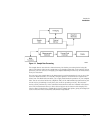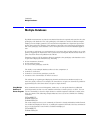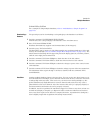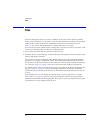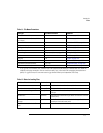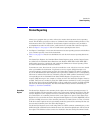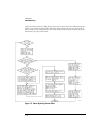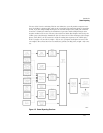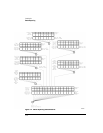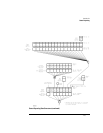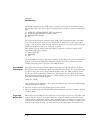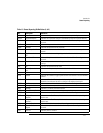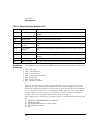
1-11
Introduction
Status Reporting
Status Reporting
Almost every program that you write will need to monitor the instrument for its operating
status. This includes querying execution or command errors and determining whether or not
measurements have been completed. Several status registers and queues are provided to
accomplish these tasks. In this section, you’ll learn how to enable and read these registers.
• Refer to Figure 1-4 on page 1-14 for an overall status reporting decision chart.
• See Figure 1-3 and Figure 1-4 to learn the instrument's status reporting structure which allows
you to monitor specific events in the instrument.
• Table 1-5 on page 1-17 lists the bit definitions for each bit in the status reporting data struc-
ture.
The Status Byte Register, the Standard Event Status Register group, and the Output Queue
are defined as the Standard Status Data Structure Model in IEEE 488.2-1987. IEEE 488.2
defines data structures, commands, and common bit definitions for status reporting. There
are also instrument-defined structures and bits.
To monitor an event, first clear the event, then enable the event. All of the events are cleared
when you initialize the instrument. To generate a service request (SRQ) interrupt to an
external computer, enable at least one bit in the Status Byte Register. To make it possible for
any of the Standard Event Status Register bits to generate a summary bit, the corresponding
bits must be enabled. These bits are enabled by using the *ESE common command to set the
corresponding bit in the Standard Event Status Enable Register. To generate a service
request (SRQ) interrupt to the computer, at least one bit in the Status Byte Register must be
enabled. These bits are enabled by using the *SRE common command to set the correspond-
ing bit in the Service Request Enable Register. These enabled bits can then set RQS and MSS
(bit 6) in the Status Byte Register. For more information about common commands, see
Chapter 3, “Common Commands”.
Status Byte
Register
The Status Byte Register is the summary-level register in the status reporting structure. It
contains summary bits that monitor activity in the other status registers and queues. The Sta-
tus Byte Register is a live register. That is, its summary bits are set and cleared by the pres-
ence and absence of a summary bit from other event registers or queues. If the Status Byte
Register is to be used with the Service Request Enable Register to set bit 6 (RQS/MSS) and to
generate an SRQ, at least one of the summary bits must be enabled, then set. Also, event bits
in all other status registers must be specifically enabled to generate the summary bit that sets
the associated summary bit in the Status Byte Register.
The Status Byte Register can be read using either the *STB? common command query or the
GPIB serial poll command. Both commands return the decimal-weighted sum of all set bits in
the register. The difference between the two methods is that the serial poll command reads



